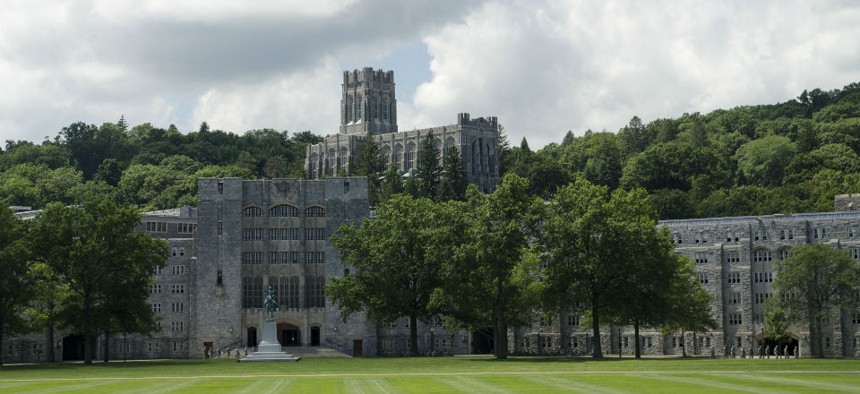Pentagon: Sexual Assaults Are Down on Military College Campuses
Defense Department estimates there were 200 fewer victims among academy students in 2014 than in 2012.
Sexual assault and harassment at the nation’s military academies is declining, according to a new report from the Defense Department.
The military academies said there were 61 total reported cases of sexual assault during the 2013-2014 academic year, down from 70 such reports between 2012 and 2013, and 80 between 2011 and 2012. Sexual assault or “unwanted sexual contact” ranges from unwanted sexual touching to rape.
Based on the data, Defense estimated that there were roughly 200 fewer sexual assault victims among cadets and midshipmen in 2014 than in 2012.
The annual congressionally-mandated Defense report found that 8.2 percent of military academy women (at West Point, the Naval Academy and the Air Force Academy) and 1.1 percent of men experienced unwanted sexual contact during the 2013-2014 academic year, compared to 12.4 percent and 2 percent, respectively, for the 2012-2013 academic year.
Of the 61 reported cases in 2013-2014, 53 were from cadets or midshipmen alleging sexual assault while in service at one of the military academies, the same number filed during the 2012-2013 academic year.
“Each military academy is showing a statistically significant decrease in its unwanted sexual contact rate or is at least trending downwards from the rates in 2012,” the report said.
But the data on actual reporting is somewhat mixed. The number of reported sexual assault cases involving cadets and midshipmen did not change between 2012 and 2014; however, the Defense data showed that the estimated rate of reporting was up to 16 percent, or about 1 in 6, for the academic year 2013-2014. The department said that percentage was “the highest ever recorded for the military service academies” showing “the gap between reporting and prevalence among cadets/midshipmen has decreased to its lowest point.”
Still, the department found sexual assault reporting at the military academies during this period was not as high as the increase in reporting among active-duty service members in fiscal years 2013 and 2014. “The academies need to strengthen their efforts to improve victim reporting and participation in the military justice process,” the analysis said.
Reports of sexual harassment from women also are down at the schools overall from 51 percent in 2012 to 48 percent in 2014, according to the Pentagon’s data. The “perceived sexual harassment rate” for male cadets and midshipmen remained the same -- 10 percent – in both those years. But the decrease was largely due to declining rates for female students at the Naval Academy – from 61 percent in 2012 to 44 percent in 2014. The rate of perceived sexual harassment for female cadets at West Point and the Air Force Academy actually increased during that time, 6 percent (49 percent to 55 percent) and 4 percent (44 percent to 48 percent), respectively.
The report includes details about the efforts the three schools have put into preventing sexual violence on campus and encouraging cadets and midshipmen to report assault and harassment, from town hall meetings and wide-ranging education and training initiatives to working with local businesses to crack down on underage and binge drinking. The Naval Academy, for instance, has incorporated classes on sexual harassment and sexual assault scenarios, moral reasoning, intimacy and gender socialization into its academic curriculum.
In January 2014, the White House launched a task force to combat sexual assault on college campuses, including a public awareness campaign called “It’s On Us.”




